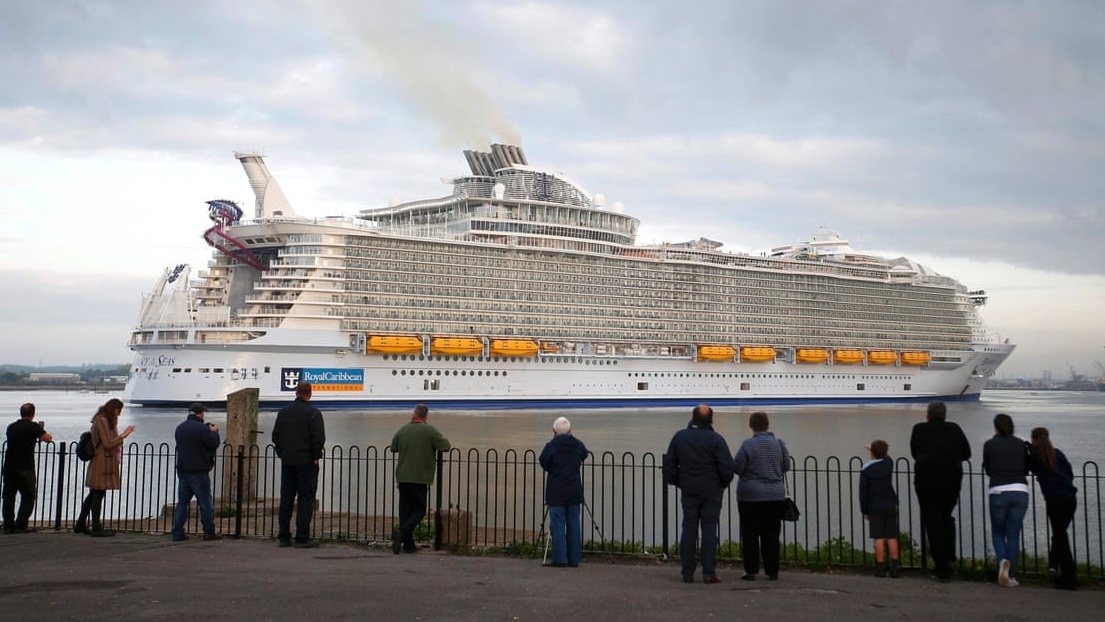Even before the coronavirus crisis began its ruthless sweep around the world, I had kind of soured on the cruise industry, one that, unlike aviation or F&B, is wholly unnecessary. Now, let me be clear on what I mean when I say “cruise industry.” The smaller ships, carrying anywhere from a dozen to a hundred or so guests, are quite a good way to explore otherwise hard-to-see places. They do what they do with a relatively benign impact on the community and environment, and many of these small ships actually benefit the communities they are associated with. When I refer to the cruise industry, it’s more accurate to say I’m talking about “industrial cruising,” seagoing holidays aboard monstrous behemoths that carry 5,000 to 6,000 passengers (or more), plus a massive complement of crew (almost half the maximum number of passengers).
:format(webp):no_upscale()/cdn.vox-cdn.com/uploads/chorus_asset/file/13445592/5742536393_788a0658ec_o.jpg)
But let’s not just make this a one-man complaining session. We’ll largely put aside my own personal distaste for such experiences… immense crowds at every meal, having to jockey for position for every possible activity, having to buy “beverage packages” at obscene markups, fighting innumerable hordes of others over a limited supply of pool loungers so you can lie supine on the deck of a large boat with a thousand strangers surrounding you, and acting like everything you’re doing – watching a stage show, eating at a steakhouse, going on a waterslide, losing your money in a casino – is some sort of amazing, novel experience. (News flash: all of these things exist, in much better iterations, on land.) And don’t even get me started on the execrable buffets.
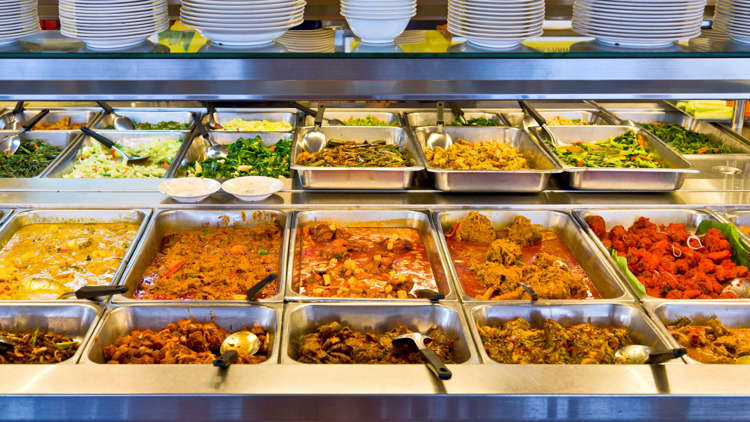
I get that some people don’t share my personal animus towards huge cruise ships and the industry as a whole. So we’ll take it a bit more objectively, using several different sources, including a comprehensive 2019 survey by Business Insider. Three things to consider: Environmental Impact, Economics and Labour Laws, and even more prominently in the spotlight in recent months, Health and Safety. There’s also plenty of death and crime on cruises, but we’ll leave that for now. Just know that over 320 people have gone overboard (or otherwise gone missing) on cruise ships since 2000. Suicides, murders, accidents… and most of it doesn’t make headlines. We also won’t dwell on the fact that, despite largely paying no US income tax, cruise operators were touted by some for bailout cash during the recent $2 trillion stimulus exercise in the US. (They were rebuffed, however.) But even setting these issues aside, there’s plenty to unpack. So away we go!
Environmental Impact
With very few exceptions, these gargantuan floating cities are truly awful for the environment. Let’s face it, there’s no way the daily sewage of 8,000 humans is going to be a treat for the oceans of the world. On average, an active cruise ship carrying “just” 2,000 to 3,000 passengers produces between 530,000 and 795,000 liters of sewage every week! And that doesn’t even account for bilge water, wastewater from sinks and drains, and solid waste. (Also, keep in mind that there are at least 60 cruise ships currently in operation which can carry more – sometimes far more – than 3,000 passengers.)

And lest you think for a moment these operators are all responsible stewards, scarcely a quarter goes by without a cruise line getting fined for illegally disposing their waste. But even the large fines are slaps on the wrist. Carnival was fined $20 million last June for pumping waste into the ocean. That may seem like a hefty amount, but given their income and the fact they don’t pay corporate tax on profits (!!!), that’s like a person who makes $100,000 a year getting a $700 fine. (Note also that this fine wasn’t for one misdeed, but rather for 800 of them.)
They’re not alone. Princess Cruise Lines (a subsidiary of Carnival) pled guilty to felony charges for illegal oil dumping and was fined a whopping $40 million for deliberately polluting the ocean off the coast of Great Britain in 2013, then attempting a cover-up.
In Alaska, cruise ships dumped over three million pounds (1.36 million kg) of trash in Juneau’s privately owned landfill in the first 10 months of 2019.
And beyond what these ships dump into the ocean and onto the land, there’s the high environmental cost of actually moving such an immense mass. Resource management experts have estimated that even a 3,000-passenger cruise ship produces some 1,200kg of carbon emissions per kilometre travelled. Of course, a single voyage of a single ship can often be thousands of kilometres.
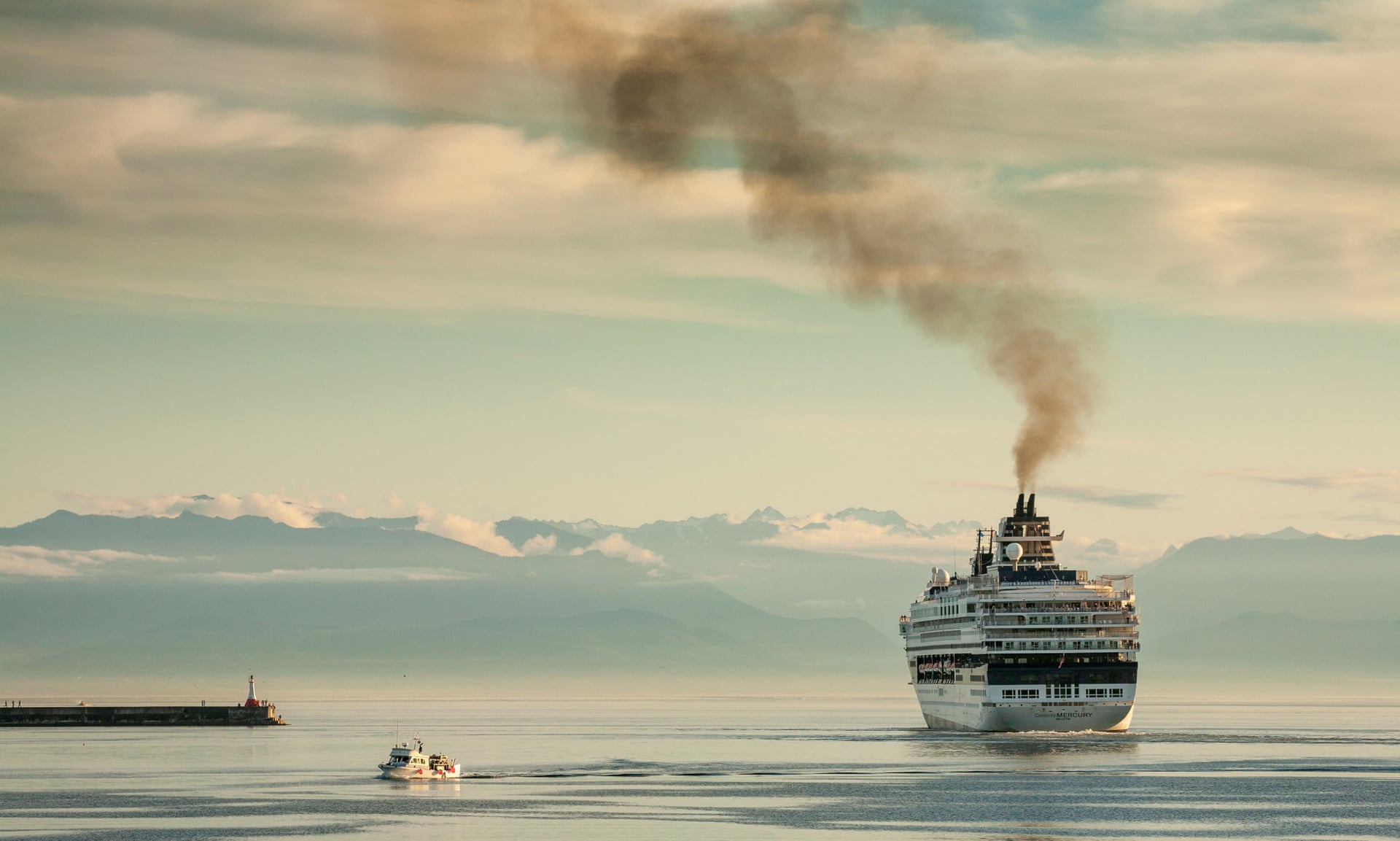
“These ships burn as much fuel as whole towns,” Bill Hemmings, the director of aviation and shipping at Brussels-based Transport and Environment Group, told The Guardian in a 2016 interview. “They use a lot more power than container ships, and even when they burn low-sulfur fuel, it’s 100 times worse than road diesel.” To underscore this point, consider the two 16-cylinder engines powering the Harmony of the Seas, currently the world’s second-largest passenger ship. At full power, each of these engines burns 5,212 litres per hour of heavy fuel oil, among the most polluting fuels in the world.
A report by The Verge says of these vessels, “They emit more sulfur dioxide than all of the passenger vehicles in Europe combined. Cruise ships also pollute the oceans by dumping waste. Not just illegally, for which these companies have been repeatedly fined, but also in some cases with impunity, again thanks to protections afforded by the laws of the countries where they’re incorporated. And where they’ve been caught, there have been coverups.”
Marine pollution experts in both Germany and Belgium have laid bare the impact, saying that, “Such a large ship would probably burn at least 150 tonnes of fuel a day and emit more sulfur than several million cars, more nitrous dioxide gas than all the traffic passing through a medium-sized town, and more particulate emissions than thousands of London buses.” Indeed, the emissions from just one large cruise ship are absolutely staggering; consider these equivalences (for travelling the same distance):
- Carbon dioxide: equal to 83,678 cars
- NOx: equal to 421,153 cars
- Particle emissions: equal to 1.05 million cars
- Sulfur dioxide: equal to 376 million cars
Between the waste and pollution generated by cruise ships, the environmental impact of a voyage is considerable. One report in Pacific Standard magazine stated that each passenger’s carbon footprint is about three times what it would be on land.
Indeed, and as a final point, a comprehensive study whose results were released in 2019 found that the 47-ship fleet of just one cruise line (hi again, Carnival!) created 10 times as much pollution as all of Europe’s passenger vehicles combined. It really is almost incomprehensible.
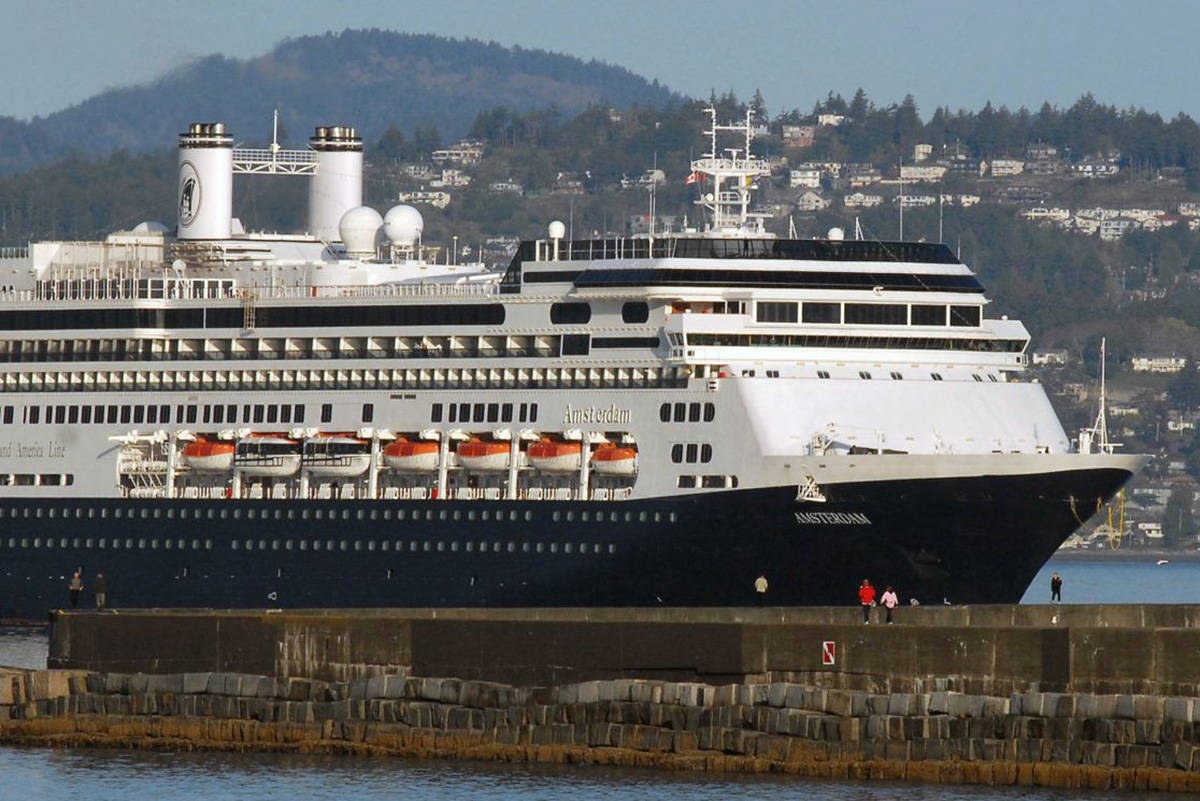
Economics and Labour Laws
The dirty little secret behind these giant ships is the expert way their corporate owners game the system. “Cruise lines want to register somewhere where they pay no taxes, are exempt from labor and wage statutes, and don’t have to follow health and safety codes,” says Jim Walker, a Miami-based maritime lawyer. “They’re looking for a place that will leave them alone, not oversee their operations.”
Accordingly, cruise lines tend to incorporate their companies and register their ships in countries with very lax labour laws, and that’s not by accident. Doing so allows them, if they so choose, to run virtual sweat shops at sea. And some do just that, typically plucking their workers from impoverished countries and then methodically exploiting them. Some crew report working 11 to 17 hours a day, seven days a week (no off days), sleeping in small dorm-like cabins with their colleagues. They are often reluctant to complain because the company can simply choose to not renew their six-month or one-year contract with no explanation. For crew on a cruise ship, there is little oversight, little regulation, and little recourse.
A detailed study showed that, industry-wide, about 70% of cruise ship employees come from underdeveloped or developing countries, and naturally, are paid considerably lower than their counterparts who hail from economically advanced countries. Predictably, the pay for labourers on cruise ships can be atrocious. Cleaners make less than $600 per month, cabin stewards between $650 and $1,150 per month, and kitchen workers about $600 per month.
It’s not all bad, of course. Those higher up in the ship’s hierarchy can make a good bit more (though it frequently still equates to an unattractive hourly wage given the intense schedule). Moreover, crew have very little in the way of living expenses, so that certainly counts for something. But it could be made considerably better for them without much of an impact to the company’s bottom line. Maddeningly, the three largest cruise lines recently showed annual profits totalling some $6 billion, largely earned on the backs of thousands of overworked, underpaid crew members.
As far as economic benefits, cruise ships do bring passengers to various ports of call, and often pay handsomely to build or update port terminals in their chosen locations. This might sound good, but it’s hardly altruistic, and rather than working with communities, cruise lines often invest only in places that support their own economic agenda. In just one example, Royal Caribbean invested $18 million to build and co-own the port terminal in Belize, called Fort Street Tourism Village. The port charge for every passenger who gets delivered here, though, is $5, and the cruise line retains 20% of that, which means Royal Caribbean recouped their initial outlay in less than seven years, and turned a profit on every passenger taken there after that. Studies have also shown that, while there are obvious financial gains possible, day-trippers (not exclusive to cruising) bring significantly lower benefits to communities than overnight and longer-term visitors. Typically, when the thousands of visitors disgorged by these ships only spend a few hours in a location, they tend to bring all of the troubles of large hordes of tourists with few of the benefits.
Some cruise lines also threaten to blacklist ports if they step out of line. Much like large retailers wield their economic clout to force suppliers to lower their prices – which in many cases is done for the benefit of the end consumer – cruise lines do this to protect their own financial interests. For example, a cabal of cruise lines joined together and threatened to boycott Antigua and Barbados in 2004 over a proposed modest increase in port charges, money which would have gone to those communities. Predictably, the threat worked and the ports relented.
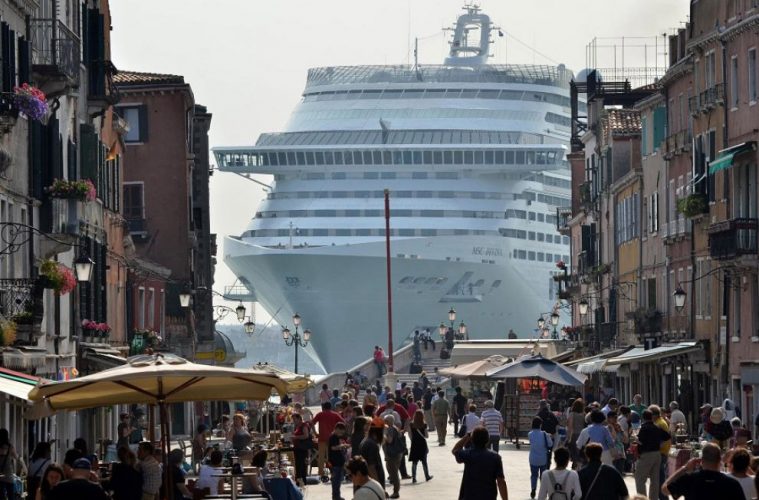
Finally, cruise lines routinely engage in “pay to play” schemes with businesses at these ports of call. Rather than giving passengers genuine recommendations about what to do during their few onshore hours, they steer them only to the companies who have ponied up to get those coveted nods.
And of course, occasionally, when they’re not bullying or short-changing the ports, they’re plowing their immense ships right into them, as this video of the out-of-control MSC Opera crashing into the dock in Venice (whose residents have railed against cruise ships for years) in June 2019 shows.
Health and Safety
Finally, the serious health concerns, which have taken on renewed and critical importance in the age of Covid-19. Cruise ships are often called “floating petri dishes” by critics for good reason. In each of the last five years, cruise ships have been the scenes of at least 10 significant disease outbreaks. Most are the dreaded norovirus, some have been rotovirus, others have been E. coli, and a disturbing number have been “unknown” diseases. (All are catalogued by the Centres for Disease Control, which frequently gives failing grades for sanitation to cruise ships, and says that respiratory and gastrointestinal diseases are “common” on these ships.)
And it shouldn’t come as a surprise. The crew of these enormous ships have to feed thousands and thousands of people several times a day, and nearly all of that food has to be stored for the duration of the voyage. Throw in the aforementioned buffets from hell, populated daily by thousands of people who hold varying opinions on the importance of personal hygiene, and quite frankly, it’s a wonder outbreaks don’t happen more frequently than they do.

The coronavirus pandemic directly affected thousands of people on cruise ships as it began unfolding in early 2020, with several ships refused and turned away by multiple ports. Hundreds of people on affected ships were quickly infected, and early in the pandemic’s spread, Princess Cruise Lines’ Diamond Princess – which was quarantined for weeks in the seas off Yokohama, Japan – had some of the highest rates of infection in the world outside of China, though their numbers were quickly eclipsed in subsequent weeks. On this and a number of other vessels, passengers and crew alike were, quite simply, trapped.
Cruise lines have parked – or even sold – their ships, cancelled months’ worth of sailings, and are bleeding cash. (Reports are that Carnival, whe world’s largest cruise operator, lost $4.4 billion in Q2 and has seen its revenues plunge 85%.) So, with apologies to the people who like massive cruise ships and what they offer, if the current pandemic spells an end to these 6,000-passenger monstrosities, I sure won’t shed a tear.

I doubt that will happen, though. The infamous Diamond Princess, which was ravaged by the virus, infecting hundreds and killing 13, has already put out advertisements seeking cleaning and disinfection service providers. So, with very little doubt, it’s just a matter of time before the same ship sets sail again, carrying buffet lines, bubbling hot tubs, multiple spas, dozens of public restrooms, and thousands of passengers. With equally little doubt, it’s also only a matter of time before another viral outbreak occurs on one of these gargantuan ships.
As for me, I’ll be spending my vacation time quite happily on land.
"ExpatGo welcomes and encourages comments, input, and divergent opinions. However, we kindly request that you use suitable language in your comments, and refrain from any sort of personal attack, hate speech, or disparaging rhetoric. Comments not in line with this are subject to removal from the site. "


